Jun-Pyo Hong
Rethinking Coarse-to-Fine Approach in Single Image Deblurring
Aug 11, 2021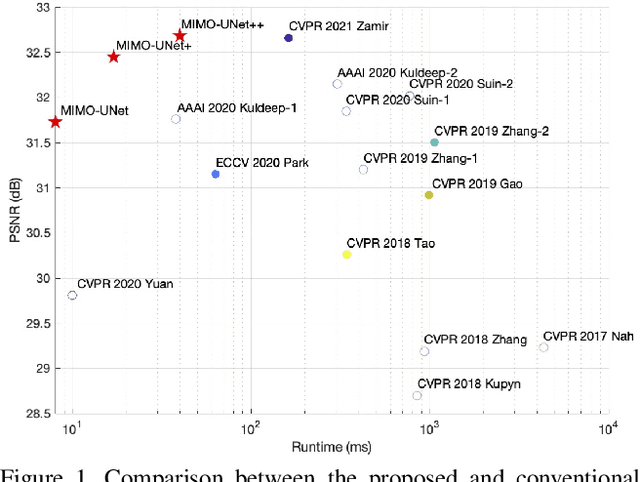

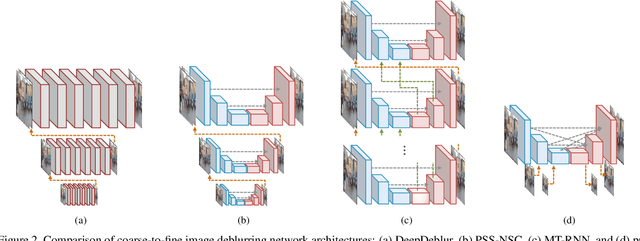
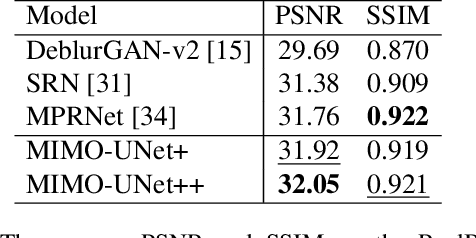
Abstract:Coarse-to-fine strategies have been extensively used for the architecture design of single image deblurring networks. Conventional methods typically stack sub-networks with multi-scale input images and gradually improve sharpness of images from the bottom sub-network to the top sub-network, yielding inevitably high computational costs. Toward a fast and accurate deblurring network design, we revisit the coarse-to-fine strategy and present a multi-input multi-output U-net (MIMO-UNet). The MIMO-UNet has three distinct features. First, the single encoder of the MIMO-UNet takes multi-scale input images to ease the difficulty of training. Second, the single decoder of the MIMO-UNet outputs multiple deblurred images with different scales to mimic multi-cascaded U-nets using a single U-shaped network. Last, asymmetric feature fusion is introduced to merge multi-scale features in an efficient manner. Extensive experiments on the GoPro and RealBlur datasets demonstrate that the proposed network outperforms the state-of-the-art methods in terms of both accuracy and computational complexity. Source code is available for research purposes at https://github.com/chosj95/MIMO-UNet.
W-Net: Two-stage U-Net with misaligned data for raw-to-RGB mapping
Nov 22, 2019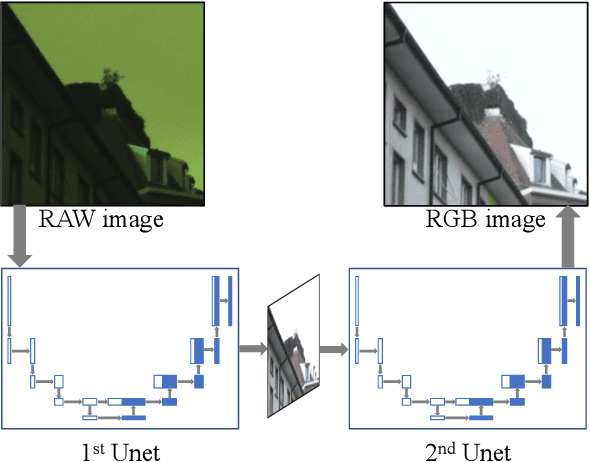
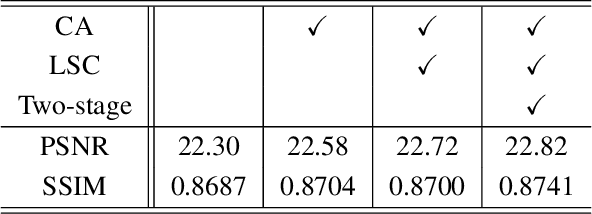
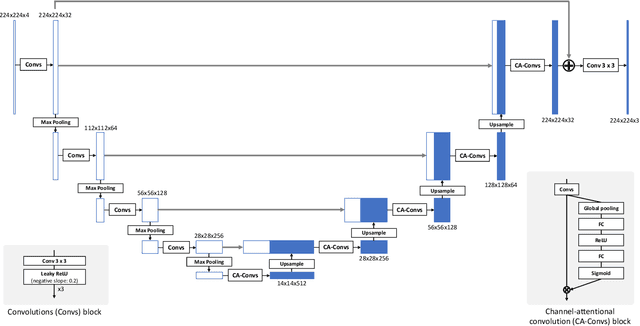
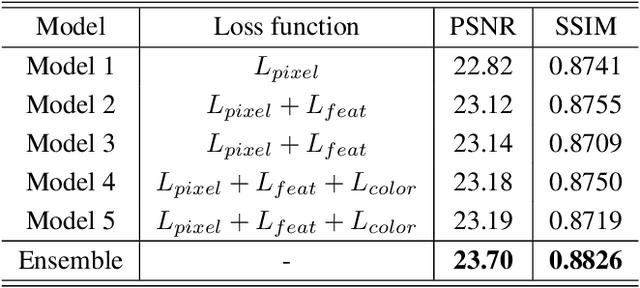
Abstract:Recent research on learning a mapping between raw Bayer images and RGB images has progressed with the development of deep convolutional neural networks. A challenging data set namely the Zurich Raw-to-RGB data set (ZRR) has been released in the AIM 2019 raw-to-RGB mapping challenge. In ZRR, input raw and target RGB images are captured by two different cameras and thus not perfectly aligned. Moreover, camera metadata such as white balance gains and color correction matrix are not provided, which makes the challenge more difficult. In this paper, we explore an effective network structure and a loss function to address these issues. We exploit a two-stage U-Net architecture and also introduce a loss function that is less variant to alignment and more sensitive to color differences. In addition, we show an ensemble of networks trained with different loss functions can bring a significant performance gain. We demonstrate the superiority of our method by achieving the highest score in terms of both the peak signal-to-noise ratio and the structural similarity and obtaining the second-best mean-opinion-score in the challenge.
 Add to Chrome
Add to Chrome Add to Firefox
Add to Firefox Add to Edge
Add to Edge